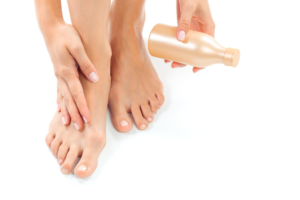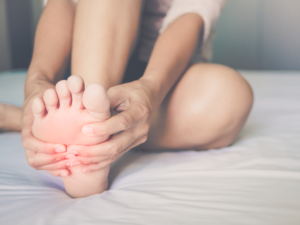Introduction to Shoe Insoles
Shoe insoles, also commonly referred to as footbeds or inserts, are specially designed components placed within footwear to enhance comfort, support, and overall foot health. Unlike standard insoles that come pre-installed in most shoes, shoe insoles are tailored to provide additional cushioning, arch support, and improve alignment, ultimately aiming to mitigate discomfort during prolonged periods of walking or standing. As an essential element for many individuals, they cater to a wide array of foot types and specific needs, ranging from athletes seeking performance optimization to those with medical conditions requiring greater support while on their feet.
The primary function of shoe insoles is to improve comfort levels. They achieve this by absorbing impact, reducing pressure on the foot, and offering customized support to every step taken. This is particularly beneficial for individuals who experience discomfort due to prolonged standing or walking, as the right insole can alleviate strain and prevent fatigue. Furthermore, shoe insoles contribute to better posture by promoting proper foot alignment, which can lead to a reduction in pain in the legs, hips, and lower back.
There is a broad variety of insoles available on the market, each designed to tackle different issues. For instance, athletes may opt for insoles that enhance shock absorption and provide extra stability, while individuals with flat feet often seek orthotic insoles designed to correct alignment and arch support. Similarly, there are insoles designed specifically for diabetic patients to help manage foot complications associated with the condition. This diversity underlines the significance of selecting the right type of insole based on personal foot structure and activity levels.
In summary, shoe insoles serve a critical role in enhancing the comfort and support of footwear, making them an invaluable addition for many individuals seeking to improve their walking or standing experience. Understanding their function and the various types available can significantly benefit users in achieving optimal foot health.
Benefits of Using Shoe Insoles
Shoe insoles serve multiple functions that significantly enhance the comfort and support of your feet. One of the primary benefits is improved comfort. Many people experience discomfort from standing or walking for prolonged periods; insoles provide cushioning and can alleviate pressure points. This leads to a more pleasant experience when engaging in daily activities, making them particularly beneficial for individuals who are on their feet for long hours.
Another advantage is the potential for better posture. Proper foot alignment is crucial for maintaining an upright posture. Shoe insoles can help in redistributing body weight across the foot, which aids in aligning the entire body. This can reduce the likelihood of back and joint pain that stems from poor posture, making insoles an essential investment for those who prioritize their overall well-being.
Foot fatigue is a common issue that many face, especially if they are active or have demanding jobs. Quality insoles can reduce foot fatigue by providing adequate support and shock absorption. This is particularly beneficial for athletes or those engaged in physical jobs where impact is significant. Moreover, shoe insoles can serve as a preventive measure against common foot ailments such as plantar fasciitis, flat feet, and overpronation. By providing arch support and stabilizing the foot’s alignment, insoles can lower the risk of developing these conditions.
Ultimately, using shoe insoles leads to enhanced overall foot health. They can play a vital role in keeping feet comfortable and well-supported, leading to improved mobility and daily performance. Given the significance of foot care in maintaining an active lifestyle, incorporating high-quality insoles into your footwear represents a valuable strategy for anyone looking to enhance their foot comfort and health.
Types of Shoe Insoles
Shoe insoles come in various types, each designed to provide specific benefits and cater to different foot conditions or activities. Understanding these types can help individuals select the most appropriate insole for their needs. The primary categories include standard insoles, orthopedic insoles, gel insoles, and custom orthotics.
Standard insoles, commonly found in store-bought shoes, are made from foam, EVA, or other lightweight materials. These insoles offer basic cushioning and comfort, making them suitable for everyday wear. They can enhance the overall fit of footwear, especially for those seeking additional support during regular activities.
Orthopedic insoles, however, are specifically crafted to address various foot ailments, such as plantar fasciitis, flat feet, or high arches. These insoles are typically made from firmer materials that provide structured support. Their design promotes proper foot alignment, alleviating pain and discomfort associated with misaligned feet. Orthopedic insoles are often recommended by podiatrists for individuals with chronic foot issues.
Gel insoles present another option, featuring a core of silicone or gel material enveloped in a soft fabric. These insoles are especially prized for their shock absorption properties, making them ideal for high-impact activities such as running or sports. The cushioning offered by gel insoles enhances comfort, while also reducing the risk of injury due to foot fatigue.
Finally, custom orthotics are tailor-made to an individual’s unique foot shape and condition. Crafted through a comprehensive assessment by a professional, these insoles ensure optimal support and alignment. Custom orthotics are particularly beneficial for individuals with specific foot issues or those requiring significant correction for their biomechanics. Choosing the right type of insole can significantly improve comfort, performance, and overall foot health.
Choosing the Right Insoles for Your Needs
When it comes to footwear, the insoles play a crucial role in providing comfort and support tailored to individual preferences and foot types. To begin the selection process, one must assess their foot arch. Foot arches can be categorized into three types: flat, neutral, and high. Individuals with flat arches typically require insoles that offer additional cushioning and support to correct overpronation. In contrast, those with high arches may benefit from firmer materials that provide stability and prevent supination. Individuals with neutral arches should look for insoles that offer a balance of cushioning and support, catering to their unique biomechanics.
In addition to arch type, comfort levels should also be evaluated. Comfort is subjective and can vary widely from person to person. It is crucial to consider how the insole feels during regular activities. Prospective buyers may want to try different insoles while standing or walking to gauge their overall comfort. Pay attention to how the insoles alleviate pressure points, as this can greatly improve the overall experience of wearing shoes. This trial method is particularly important for those who engage in physical activities, as they might require specialized insoles to support their movements and prevent fatigue.
When selecting the right insoles, consider lifestyle factors as well. Active individuals involved in sports may prioritize shock absorption and arch support, while those using insoles for everyday wear might focus more on cushioning and durability. Additionally, it is advisable to consult a professional or podiatrist, as they can provide tailored recommendations based on an individual’s foot structure and specific requirements. This professional insight can significantly enhance the selection process, ensuring that the chosen insoles align with personal foot health goals.
How to Properly Insert and Maintain Shoe Insoles
Inserting and maintaining shoe insoles correctly is critical for maximizing comfort and support. The first step involves ensuring that the insoles fit your shoes appropriately. Most insoles can be trimmed to achieve a snug fit. Start by removing the existing insoles from your shoes and laying them on top of the new insoles. Use a pair of scissors to carefully cut along the edges of the insoles to create an exact shape that matches your footwear. This process not only enhances comfort but also helps to prevent shifting during use.
After inserting the insoles, it is essential to rotate them regularly to promote even wear. A good rule of thumb is to use multiple pairs of insoles and switch between them weekly. This practice allows for better recovery of materials and helps maintain their structural integrity, ultimately prolonging their lifespan. Regular rotation is especially important if you engage in activities that put more stress on your feet, such as running or hiking.
When it comes to cleaning, maintaining shoe insoles requires a gentle approach. Most insoles can be wiped down with a damp cloth and mild soap solution. Avoid soaking them, as this could damage their materials and support features. Let the insoles air dry completely before reinserting them into your shoes. Moreover, if they have developed a noticeable odor, consider sprinkling baking soda on them overnight to help neutralize any unpleasant smells.
Lastly, it is crucial to know when to replace your shoe insoles. Signs that indicate it’s time for a replacement include noticeable wear and tear, a decrease in comfort, or persistent foot pain despite having recently inserted new insoles. Replacing insoles at the right time ensures that you continue to receive optimal support and comfort during all activities.
Shoe Insoles for Different Activities
Choosing the right shoe insoles can significantly influence comfort and performance across various activities. Different activities place unique demands on the feet, and corresponding insoles can alleviate discomfort while enhancing overall functionality. For instance, runners often require insoles that provide extra cushioning and arch support to absorb impact and reduce fatigue. A good choice for avid runners is gel insoles, which offer shock absorption and can also help in maintaining proper foot alignment during long runs.
For outdoor enthusiasts, hiking demands insoles that offer stability and support. Hiking insoles typically feature a rugged design with enhanced arch support that can accommodate uneven terrain. Look for insoles made from materials that wick moisture, as this will keep the feet dry and comfortable during extended periods of outdoor activity. These features are essential for preventing blisters and ensuring optimal foot health during strenuous hikes.
Individuals who spend long hours standing, such as healthcare workers or retail employees, should consider insoles designed for prolonged support. These insoles often have additional cushioning layers to alleviate pressure on the feet, helping to reduce common issues such as foot and lower back pain. Ergonomically designed insoles with a medium arch support can provide a beneficial balance of comfort and stability throughout the day.
Casual wear or every-day insoles focus more on comfort and breathability. Soft foam insoles can provide added cushioning for daily wear, making them suitable for walking or standing errands. These insoles can help maintain foot health while providing the necessary support for everyday activities. It is essential to select an insole that suits the specific activity you engage in, as the right support can markedly enhance comfort and overall performance.
Common Foot Problems Addressed by Insoles
Shoe insoles play a significant role in enhancing foot comfort and support, particularly for individuals suffering from various foot ailments. One prevalent condition is plantar fasciitis, characterized by inflammation of the plantar fascia, the tissue connecting the heel to the toes. Those affected often experience sharp heel pain, especially during the first steps in the morning. Insoles designed with adequate arch support can help distribute weight more evenly and minimize stress on the plantar fascia, providing much-needed relief.
Flat feet, a condition where the arches of the feet collapse, can lead to discomfort, especially during prolonged periods of standing or walking. Customized orthotic insoles can help restore proper foot alignment and alleviate associated pain. By introducing a supportive structure that promotes the natural arch, these insoles assist in redistributing pressure away from vulnerable areas, enhancing comfort for individuals facing this issue.
On the contrary, individuals with high arches experience their challenges, often dealing with excessive pressure on the ball and heel of the foot. Insoles that offer cushioning and shock absorption are beneficial for high-arched feet, allowing for a balanced weight distribution and reducing the likelihood of discomfort or injury during physical activities.
Other common foot-related problems that can be addressed by specialty insoles include metatarsalgia, heel spurs, and diabetic foot pain. For instance, metatarsalgia involves pain in the ball of the foot due to various factors, including improper footwear. Insoles with added cushioning in the forefoot can alleviate pressure in this area. Similarly, for those with diabetes, insoles designed specifically for diabetic foot care can help prevent complications by offering extra support and protection.
In summary, specialty insoles are a versatile solution for a variety of foot problems, providing the necessary comfort and support to improve overall foot health.
Myths and Misconceptions About Shoe Insoles
There are many misconceptions surrounding the use of shoe insoles, which can lead to confusion when selecting the right support for one’s feet. One prevalent myth is that insoles are only necessary for individuals with existing foot problems. While it is true that those with conditions like plantar fasciitis or flat feet greatly benefit from targeted support, insoles can provide comfort and stability for anyone, aiding in the prevention of future issues.
Another common misunderstanding is that all insoles are created equal. In reality, there are various types of insoles designed for different activities and foot types. Basic insoles often found in retail shoes may not offer the necessary arch support or cushioning required for extended periods of standing or walking. Custom or specialized insoles can greatly improve comfort by better aligning the foot and distributing weight evenly, resulting in reduced strain during daily activities.
Some people believe that using insoles will alter their natural walking pattern in a negative way. However, proper insoles are designed to enhance the foot’s biomechanics, leading to improved posture and reduced fatigue. Misalignment caused by wearing inappropriate footwear can lead to discomfort, making the right insoles an essential tool for maintaining foot health.
Another widespread myth is that insoles must be replaced frequently. While it is true that most insoles wear out over time, the frequency of replacement depends on the material used and how often they are used. High-quality insoles can last longer than the typical pair of shoes if maintained properly, so users should assess their condition regularly rather than assume they need constant replacement.
By understanding and debunking these myths, individuals can make informed decisions when choosing shoe insoles, optimizing comfort and support for their feet.
Conclusion
Investing in quality shoe insoles is paramount for anyone seeking enhanced comfort and support for their feet. Throughout this guide, we have explored how the right insoles can significantly alleviate discomfort caused by various foot conditions, improve alignment, and provide essential cushioning. The long hours spent on our feet, whether due to work obligations or leisure activities, make the need for effective foot support even more crucial.
A well-chosen insole can help mitigate the impact of repetitive stress on the feet, which can lead to long-term issues such as plantar fasciitis or other musculoskeletal disorders. Quality insoles are specially designed to cater to diverse foot types, offering specific attributes such as arch support, shock absorption, and moisture-wicking properties. This not only enhances comfort during daily activities but also contributes to overall foot health.
Moreover, many individuals underestimate the influence that insoles have on their physical well-being. Beyond mere comfort, investing in specialty insoles can reduce fatigue, improve posture, and even enhance athletic performance. For those who are actively engaged in sports or lead a physically demanding lifestyle, selecting the appropriate insole can be a game-changer in terms of endurance and recovery.
In conclusion, considering the various benefits outlined, it is essential for individuals to assess their unique foot needs. Quality shoe insoles are not merely an accessory; they represent a significant step toward maintaining foot health. By prioritizing comfort and support, you are making a pivotal investment in your overall well-being, enabling you to enjoy a more active and fulfilling life. Explore the options available and find the perfect insoles that align with both your lifestyle and foot health requirements.























+ There are no comments
Add yours